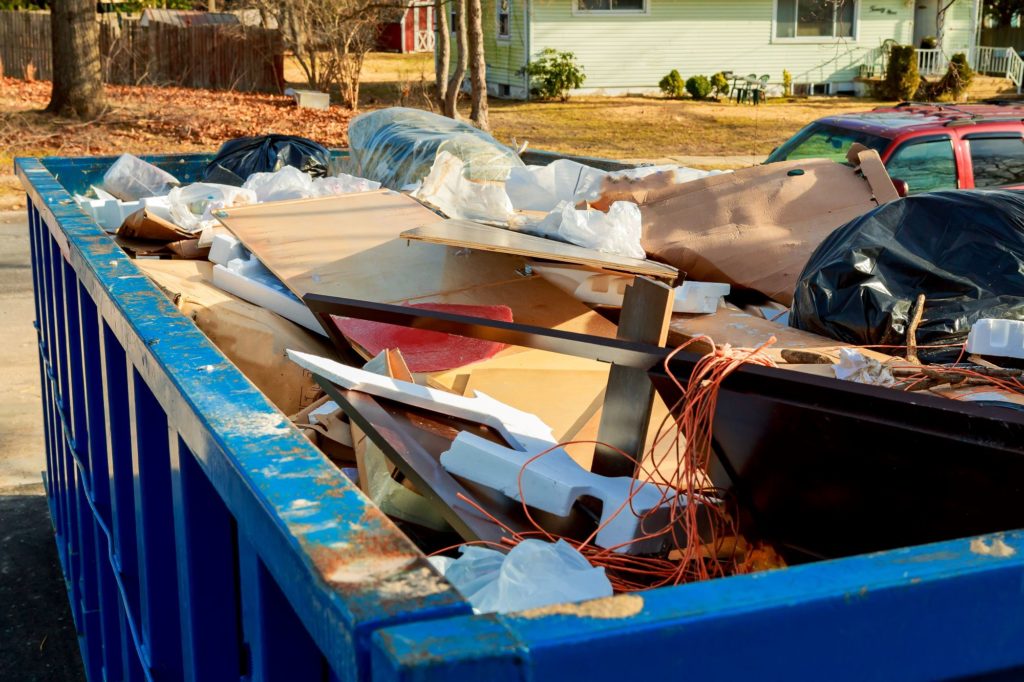Imagine standing before a heap of rubble and debris. Hidden within is a dangerous mix of hazardous materials affecting the environment and human health. Addressing this waste is urgent and requires understanding and responsible action. Read on for tips for waste disposal when it comes to hazardous waste.
In construction, waste disposal isn’t merely about throwing away unwanted substances. There’s a need to segregate, identify, and address each type with the care and attention it demands. Every piece of waste has its place, from simple recyclables to potentially harmful substances. Using a skip bin for mixed building waste becomes essential in this process. It enables professionals and DIY enthusiasts to sort and dispose of various materials safely and efficiently. In this guide, you’ll discover actionable tips for safe disposal that address hazardous building waste’s visible and invisible threats.
Understanding Hazardous Building Waste
Identifying what constitutes hazardous building waste is the cornerstone of safe disposal. Distinguishing harmful substances from safe ones, and understanding their potential risks, is essential to safe handling.
Here’s a look at the types of hazardous items:
- Asbestos, found in insulation and fire-resistant materials, can lead to serious health issues.
- Lead-based paint, a common material in older buildings, poses risks if incorrectly handled.
- Solvents like acetone, acids like sulfuric acid, batteries such as lead-acid batteries, and other specific chemical substances that require careful disposal.
Understanding these elements paves the way for safe and responsible handling.
Guidelines For Handling Hazardous Waste
Handling hazardous waste is not a task to be taken lightly. Essential training, equipment, and safety measures are required. Ensuring the right procedures and precautions can significantly affect personal safety and environmental protection.
Here are some best practices to consider:
- Use personal protective equipment (PPE) and safety measures, such as wearing proper gear like masks and gloves. Ensure regular equipment checks.
- Procedures for handling, storage, and transportation include secure packaging and optimal storage conditions, with special precautions during transit to prevent accidents.
- Training and certifications equip you with the necessary knowledge and skills through appropriate education.
Implementing these practices sets the foundation for the next phase of the process: segregating and recycling the waste efficiently. This goes beyond mere handling, and into the strategic planning of waste management.
Strategies For Waste Segregation And Recycling
Waste segregation and recycling are about more than disposal; they prioritize resource management and minimize environmental impact.
Here’s how you can approach this vital aspect:
- Understanding how to separate hazardous waste from non-hazardous waste is vital. On-site segregation practices guide you in separating items. Effective labelling and marking systems help in categorization.
- Explore techniques for recycling and reusing non-hazardous substances, such as repurposing concrete for landscaping or partnering with local recycling agencies.
- Recognizing the role of waste bins and containers is essential, as they play a crucial role in this process, aiding in efficiently managing mixed waste.
By putting these strategies into action, you are promoting sustainability and opening doors to professional disposal options. These principles are not only applicable to professionals but also to those who prefer to handle these tasks themselves.
Advice For DIY Renovators
Managing hazardous building waste can be a doable task for those who prefer a hands-on approach. With the right knowledge, tools, and guidance, DIY enthusiasts can take on the challenge responsibly.
Here are some tips to guide you:
- Know when to call a professional and when DIY is feasible, and always wear the necessary protective gear.
- Local facilities are available for drop-offs of hazardous waste. Be aware of costs and documentation requirements, such as providing proof of residency and adhering to itemized disposal fees.
- Your material choices make a difference. Minimizing waste through conscious decisions plays a vital role in responsible disposal.
These practical tips pave the way to consider the broader environmental implications and sustainability considerations.
Considering Environmental And Sustainability Impacts
Proper disposal of hazardous waste is more than a legal obligation; it’s a social responsibility. The choices made have long-lasting effects on the environment and future generations.
Consider the impacts:
- Improper disposal affects our carbon footprint and ecological balance, with repercussions for future generations.
- Sustainable waste management practices like embracing models such as a circular economy and promoting community awareness lay the foundation for a better tomorrow.
These considerations add depth to your waste management strategy and lead to the necessary understanding of regulations and compliance. They also bring us to the final point, concluding the journey towards responsible waste management.
Concluding Safe And Responsible Disposal Practices
In conclusion, managing hazardous waste as well as regular household waste is complex but essential. This guide offers a starting point to understand the materials and take responsible actions. Continuous learning and best practices are key to a safer future. Remember, responsible waste management is an ongoing collective responsibility.

